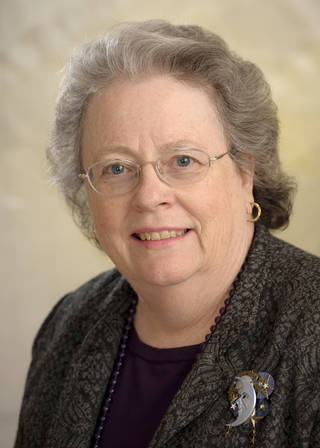Commentary: Astrobiology Research Threatened at NASA
NASA's 2007 budget proposal was released in February. It's 0.7 percent of the Federal Budget not including the funding for Iraq. Administrator Mike Griffin has explained that the cuts of $3.1 billion through 2010 to Earth and Space Sciences (Science Mission Directorate) are required in order to fulfill the President's vision for space exploration. In previous budget years, life science research and aeronautics were likewise reduced to pay the bills elsewhere in NASA. Although the '07 NASA budget proposal does provide a less-than-inflation-rate increase, all of the extra funding and more is dedicated to the completion of the Space Station that requires continuation of the Shuttle program, and development of the Crew Exploration Vehicle.
As Griffin has correctly observed, "difficult choices must be made." I sympathize with Griffin, but do not agree with the way the choices are being implemented.
NASA's first priority is to sustain human access to space with the aging Shuttle fleet while simultaneously building the CEV. NASA is being asked to take on a major new program-the CEV-without sufficient new dollars, and Mike Griffin is in the difficult position of deciding which programs to feed and which to starve. It is unlikely that anyone at NASA can truly predict what the CEV will cost to build. As NASA's history demonstrates, it is extraordinarily difficult to accurately predict the cost of space mission hardware whether for robotic or human use. Cutting science at NASA to support human access to space is a slippery slope.
I predict that in the future when unanticipated costs for sustaining the shuttle and building the CEV arise, more dollars will be pulled from science to pay the bills. There is simply nowhere else to go within the NASA budget. Life science and aeronautics have already been starved. Griffin and his team are in a hard spot. They are being asked to achieve a poorly funded Vision.
Science is suffering, and scientists, students and the public are not going to quietly accept the cancellation of nearly completed missions. Nor will they tolerate the starvation of fundamental research programs. In Astronomy and Astrophysics Division, the Stratospheric Observatory For Infrared Astronomy (SOFIA) and Dawn Missions were originally scheduled for cancellation in the '07 budget. Space Interferometry Mission is delayed, and Terrestrial Planet Finder has been pushed beyond the future budget horizon, the equivalent of cancellation. Both SOFIA and Dawn have now been reviewed. This week Administrator Griffin reinstated Dawn overturning Mary Cleave's abrupt cancellation of the mission. The results of the SOFIA review have not yet been announced. SOFIA is virtually complete, and it makes no sense to cancel this mission as several members of the House of Representatives-including Rep. Ralph Hall (R, Texas), Rep. Mike Honda (D, CA)--both pointed out to NASA administrators in Congressional hearings on the NASA budget.
The proposed '07 cuts are not restricted to these specific missions. Much less obviously, the Research and Analysis (R & A) budget in the Science Mission Directorate are cut 15 percent across the board, with astrobiology was singled out for a 50 percent cut in '07. These cuts appear as TBD in the February budget release. Both Griffin and Cleave have rationalized cutting R & A funding as sharing the burden of balancing the NASA budget and meeting the requirements for the Vision for Space Exploration. In a letter of February 27 to Dr. Bruce Runnegar, Scientific Director of the NASA Astrobiology Institute, Administrator Griffin states:
"Budget limitations and priorities associated with the Vision for Space Exploration have caused us to delay or indefinitely defer a number of astrobiology intensive missions. In particular, the Mars Sample Return and the Terrestrial Planet Finder missions have been indefinitely deferred, and the Space Interferometer Mission has been delay at least 3 years. Under these circumstances, funding for the supporting astrobiology research will also decrease."
Breaking space news, the latest updates on rocket launches, skywatching events and more!
This week, more than 700 scientists, students and educators from around the planet are in Washington DC for the biannual Astrobiology Science Conference(AbSciCon). They are sharing new scientific discoveries about life on Earth and beyond. Sessions have ranged from the latest news the "cold faithful" geysers on Enceladus and the incredible discoveries of Opportunity and Spirit on Mars, to the nature of the interstellar medium and the search for Earths around distant stars. Astrobiology is the multidisciplinary scientific endeavor to understand the origin, evolution and future of life in the universe. Astrobiology asks the big questions: Are we alone? Where did we come from? What is the future of life?
Astrobiology is the core science of space exploration, and it's proposed for a 50 percent cut. The 2005 budget was approximately $65 million. For 2006 and forward, Cleave cut the program to $32.5 million.
As soon as the proposed 50 percent cut was announced, the astrobiology community began advocating for a more balanced program of science and space exploration within NASA and on the Hill. Again, Congress has questioned NASA officials about the decision to cut so deeply into scientific research. Last week, NASA responded by proposing to reinstate between $30 to $40 million to the astrobiology budget in 2006-2008, as Dr. Carl Pilcher explained in the NASA Town Hall meeting on Monday evening, March 27. This is a step in the right direction, but insufficient to sustain this vibrant and exciting endeavor that is central to space exploration.
Astrobiology is exciting science that engages the public, and is drawing many young people to study science, engineering and technology to prepare to explore our solar system and beyond. Senior scientists at AbSciCon say that their astrobiology graduate programs are attracting some of the best graduate students they have ever seen from both the US and internationally.
There are many young scientists here at AbSciCon: undergraduates, graduates and post-docs. They are simultaneously excited about their science and very concerned about their future careers. At the NASA Town Hall Meeting, graduate student Kevin Hand of Princeton University asked pointedly "When I complete my PhD, will I need to look for a job in China? Post-docs and young scientists are supported by R & A funding. Cuts to science research programs will drive us to pursue our scientific careers outside of the US." Ironically, Hand is one of three young scientists featured in James Cameron's IMAX astrobiology-themed film, Aliens of the Deep. Cameron produced this film to inspire young people to pursue scientific careers that are now threatened by cuts to the entire R & A program and to the robotic space missions.
The decision to tax $3.1 billion from SMD to "balance the budget" is shortsighted. Beyond TPF, SIM and Mars Sample Return, the cuts are falling upon the small to medium-sized missions, and hurting the R & A program. These missions and research projects are the training ground for the future scientific and technical workforce. Griffin openly calls for NASA to inspire and train this future workforce. But, the cuts to R & A including astrobiology, and the robotic missions, damages workforce training. Developing high quality STEM professionals requires sustained funding not a roller coaster ride.
Together, NASA and Congress need to develop a balanced program of space exploration that has adequate funding to achieve the Vision of Space Exploration. When the Apollo Missions went to the Moon, we were amazed. Today, if we are to achieve more than simply getting to the Moon before the Chinese, NASA's science programs need to be as valued as human space exploration. As a graduate student said to Griffin in December at the American Geophysical Society meeting in San Francisco, "I'm willing to make sacrifices to go to the Moon and Mars, but if I do, will NASA do more than leave footprints?" It's a good question.

Edna DeVore is a science and astronomy educator and the former Director of Education and Public Outreach for the SETI Institute. She earned an undergraduate degree from the University of Pacific followed by a master's degree in instructional technology from San Jose State and a master's in astronomy from the University of Arizona. In 1992, Edna joined the SETI Institute, where she wrote features on space exploration, astrobiology and more, some of which appeared on Space.com. She was among the first principal investigators to propose projects to NASA's Office of Space Science and receive funding for educational programs. Edna went on to work on education and public outreach for NASA's Kepler space telescope and SOFIA flying telescope missions. Edna received numerous awards during her tenure at SETI, including NASA Honor Awards for her work on Kepler and SOFIA, and Aerospace Awareness Award for Women in Aerospace in 2005. Edna retired in 2013.
